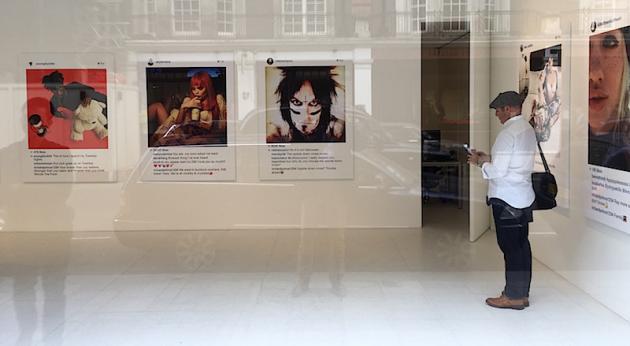From those as successful as Ai Weiwei, to children newly born, it seems that everyone has an Instagram account. That’s no surprise either. It is one of the biggest social media applications, and after being bought by Facebook for $1billion in 2012, it has only grown. Now receiving upwards of 400 million users per month.
But how has the surge in Instagram’s use managed to influence the world of art?
A majority are using it to keep in touch with friends, to upload photos that look good, or to keep people updated on their daily meals. Picasso said that after photography, he had nothing else to learn. Others seem to disagree with him; they are publishing photos on Instagram and trying to say something new in it. There is a subgroup of people that are using the application for bigger things. They are using it to produce stunning pieces of art.
One of these people is the artist behind the recent Royal Academy exhibition, Ai Wei Wei (@aiww). He uses his Instagram account to make large political statements about his native country of China. He gives an importance to free speech; he uses his photos to show off his freedom whenever he has it, and to point out whenever he doesn’t. He mixes aesthetic and abstract photography https://www.instagram.com/p/BEqAFp-KDxf/ with more topical and human photography [[https://www.instagram.com/p/BEMcJ0OKDzm/.
What Ai Wei Wei also shows in his posts is the equal value that Instagram gives to each user, no matter their place on the planet. From well-to-do people such as Laurie Simmons (@lauriesimmons) to those lesser known such as Ellie Costello (@makeupisart_x) – Instagram takes away the need to have rich networks.
A by-product of globalisation, Instagram feeds from the idea that success is determined through new means like follower counts. Costello and Simmons are case studies here. They are both entirely separate in both lifestyle and content, but they are both after the same thing. They both want followers.
To find out more about how Instagram worked as a platform for art, I had a conversation with Costello, specifically asking about her passion for creating theatre makeup. She mentioned tips and tricks that she had for making followers, and why she wanted them in the first place. I asked her whether or not she would continue making her art if she didn’t have the follower count she has now. She said no. “After using it for over a year, if I only had 500 followers, I wouldn’t upload anymore.”
That says a lot about Instagram as a platform for art. In this regard, it’s not only a medium for art, but also a motivator.
Whilst Instagram is a motivator for some people’s art, for others the main motivator will always be money. Some people such as @themostfamousartist make art that is simplistic but intriguing. It manages to merge the classical with the contemporary, but is mainly interested in the money that people are willing to spend on it. Recently a selection of second hand “boy toys” was sold by the artist for $330 each.
Accounts like @themostfamousartist are hounded for the overvaluation of their work, but they are proof that people are using Instagram to actively seek art out. Further, they are proof that the app can be used as a legitimate platform for displaying, selling and conversing about art.
All these Instagrammers have one thing in common. All of them use Instagram as an infinite gallery to present their work. A fresh perspective on this is given by the artist Richard Prince, who in the Gagosian gallery in 2015 displayed a room in with large canvases of appropriated Instagram posts. Prince took Instagram as a platform for art, and framed it as art itself.
Prince’s work is definitely a noteworthy one. It is a new take on our realities, and on art’s form, depicting an astute perspective on the app’s capabilities and functions. He shows the significance that Instagram has on our lives, and shows the bold statements that it makes in all artistic communities.
Love it or hate it; there is no doubt that Instagram is popular. What is interesting is how people are using that popularity. It is a gallery of Babel being used to show every possible photograph, that everyone can view limitlessly and freely. Although its popularity distances some artists from Instagram, its tools are truly the democracy of photography.
Words: Ben Duncan Photo P C Robinson © Artlyst 2016

